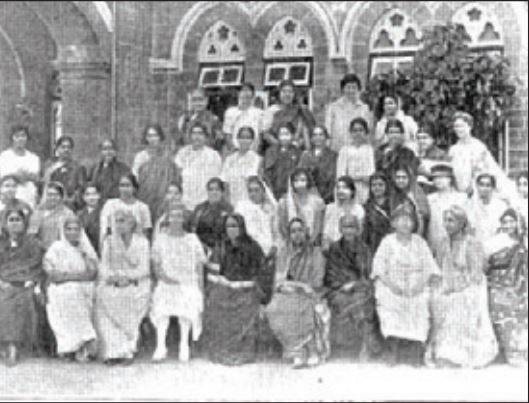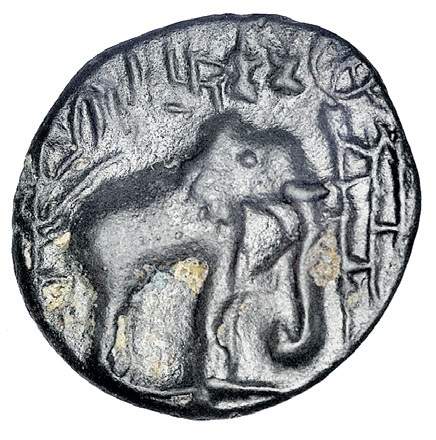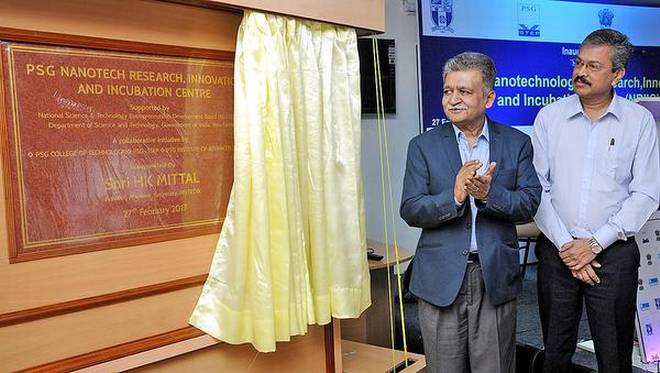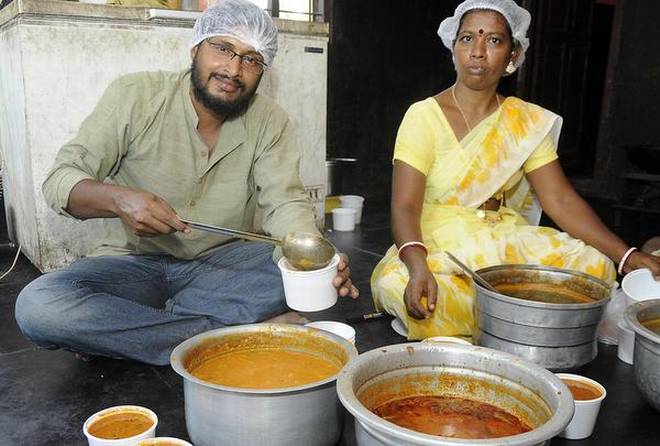07th mar
06th
05th
04th
Women’s Indian Association to mark centenary

Chennai :
It was in the gardens of the Theosophical Society that the idea of the Women’s Indian Association (WIA) came to be in 1917, and so it is only befitting that 100 years later, the association chose the venue to celebrate its centenary.
The 100th year celebrations will be inaugurated by President Pranab Mukerjee on Friday, with Carnatic vocalist Aruna Sairam having been invited to present the invocation song.
Founded on May 7, 1917, by women’s rights activists such as Annie Beasant, Margaret Cousins, Dr Muthulakshmi Reddy, Sister Subbalaskmi and Sarojini Naidu, who referred to themselves as the “daughters of India”, the mission of the association to empower women hasn’t changed over the years.
“Times though have changed as have the issues that women have to contend with,” says WIA chairperson Padma Venkataraman, daughter of former president R Venkatraman.
In the early 20th century, WIA battled against the social evils – which ranged from a lack of education of girls, child marriage, and the denial of voting rights.
The WIA took an active part in the political movements of the time. In 1917, for instance, when Besant was arrested and interned, branches of the WIA took active part in obtaining her release.
The WIA also published a monthly journal in English named ‘Stri-Dharma’, which was edited by freedom fighter Muthulakshmi Reddy from 1931 to 1940. WIA was the first women’s association in India to present a memorandum to the Round Table Conference on Women’s Franchise and her Constitutional rights as well as the initiator of the first All Asian Women’s Conference.
From a single branch that fought to make its voice heard, the WIA today has more than 40 branches and affiliations, 9000 members, and looks after the welfare of more than 5000 women.
At the WIA’s present premises in RA Puram, women learn computer science, nursing, and tailoring, and are provided a hostel “We are no longer an association but a federation,” says M Bargavi Devendra, honorary secretary.
“While our monthly activities and programmes change, our sole aim is to work for the socio-economic benefit of women.
source: http://www.timesofindia.indiatimes.com / The Times of India / News> City News> Chennai News / TNN / March 03rd, 2017
‘Galapra’ period coin die made by Roman smiths minted in Sangam Era?

Chennai :
After a gap of several years, a ‘Galapra’ period coin has been discovered and deciphered in Tamil Nadu, thanks to the efforts of R Krishnamurthy, president, South Indian Numismatic Society (SINS).
The coin was collected from the Amaravathi river bed Karur in 1986. The period immediately after Sangam Age in the Tamil Country is called the Kalabhra (also Galapra) Interregnum and an alien tribe occupied the Tamil Country throwing out the ancient Chera, Chola and Pandya kingdoms and ruled for some period for which there is no proper evidence.
“This is an accidental discovery. When I was rearranging my old collection of Pallava Coins six months ago, I saw a coin which has a different texture not at all connected with the Pallava coin. In the coin holder, I have written in 1986 that the coin was collected from the Amaravathi river bed, Karur,” Krishnamurthy, an expert in deciphering Brahmi scripts, told Express.
He also recalled that in 1986 he had published a square copper coin with an elephant on the obverse and a legend in Brahmi-script “I read the legend as ‘GALAPIRA’. Many scholars did not accept my reading because of some reasons,” he recalled. Krishnamurthy had presented a paper on his recent discovery at the recent conference of SINS at Hyderabad.
Regarding the date of the coin, Krishnamurthy said, “The coin is die struck and the minting is of high quality. It looks similar to the Roman bronze coin of Third century AD. On going through a Roman Coin catalogue, I found a coin similar in diameter and weight. The Galapra coin die might have been designed and made by Roman coin die-makers.”
He further said the ‘Galapra’ coin had four symbols on the obverse top right near the border which are usually seen in Sangam Age Tamil coins.
“So, the coin may have been minted at the fag end of Sangam Age,” Krishnamurthy said.
source: http://www.newindianexpress.com / The New Indian Express / Home> Cities> Chennai / by Express News Service / March 02nd, 2017
Nanotech incubation centre inaugurated

It will focus on smart textiles, healthcare, renewable energy
With efforts to encourage commercial production of innovative products in areas such as biotechnology, internet of things, and nano technology, about 30 % companies at the technology business incubators in the country are in such high-end technologies, Harkesh Mittal, advisor and head of National Science and Technology Entrepreneurship Development Board (NSTEDB), told presspersons here on Monday.
He inaugurated here the PSG Nanotech Research, Innovation, and Incubation Centre, which is a collaboration of the PSG Institute of Advanced Studies, PSG College of Technology, and PSG-STEP and is supported by the NSTEDB.
This is the only incubation centre so far for nano technology and it will focus on smart textiles, healthcare, renewable energy, and plastic electronics.
The area of nano technology is new and lot of research is happening in this field. There is a need for transfer of technology, taking ideas to the market. The incubator will support such an effort, he said.
The NSTEDB aims to start 20 new technology business incubators every year in different verticals.
There are 110 technology business incubators in the country and 50 of these give seed support to the incubatees. The NSTEDB gives ₹10 crore to each of these incubators and the amount is disbursed as loan or equity in two to three years. The National Initiative for Developing and Harnessing Innovations was launched last year. Under this initiative, an incubator gets seed support, has the scope to upscale, and will get support to covert ideas into prototypes.
PSG STEP will launch shortly an entrepreneurial residential programme. It is among the 10 incubators in the country that will offer fellowship for a year to students who are entrepreneurs. A student can receive up to ₹30,000 a month. Each incubator will get ₹36 lakh a year to extend this support, he said.
It will also launch a programme to give up to ₹10 lakh as grant to convert ideas into prototypes (Promoting and Accelerating Young and Aspiring Innovators and Start Ups). About 10 innovators will receive the support every year and this project is sanctioned for 10 incubators this year. The incubator will get ₹1.2 crore support from the Department of Science and Technology to set up a lab and ₹20 lakh to buy raw materials.
According to K Suresh Kumar, General Manager of PSG STEP, the nano tech centre here is established at a total cost of ₹15 crore. While ₹7.5 crore is provided by the DST, the rest is from the PSG Institute.
It will support 10 incubatees for a maximum of five years each. Entrepreneurs can come with their own projects or take up products developed by researchers at PSG Institute of Advanced Studies, he said.
source: http://www.thehindu.com / The Hindu / Home> News> Cities> Coimbatore / by Special Correspondent / Coimbatore – February 28th, 2017
Curries for the corporate soul
From a high-paying job to a home-made curry business and rearing indigenous cattle at home, G. Rajesh is living his dream
“What’s with you now? Don’t be scared, they won’t hurt you!” G. Rajesh chides his cow Singari. Summer is setting in with a vengeance and the grazing ground in Tambaram where Rajesh is cajoling his cattle to drink water, is blazing hot. Cut to five years ago, and the 34-year-old would’ve been seated in an air-conditioned office discussing mutual funds across the table, with a customer. Some decisions can tilt one’s world on its head and Rajesh’s did just that. A year ago, he decided to give up a high-paying corporate job and live life on his own terms.
The big leap
“I’ve always been angry with consumerism,” says Rajesh. “To have someone dictate terms, telling us what to buy, what to eat, and how to live our lives.” His 12 years of corporate life only furthered his dislike for all things “superficial”. “I was being judged based on the car I drove and the brand of pen I used,” he shakes his head. There was good money, but then Rajesh says that he’s the same person — whether he earned ₹ 8,000 or ₹ 80,000. “The more money I made, the more my needs increased.” He put an end to this constant struggle with his way of thinking and how society functioned, and started his own business.
Headquartered at his Tambaram home, Rajesh’s ‘Thamizhan Home-made Curries’ has five outlets around the area. His small team that consists of S. Madhusudanan (his business partner), M. Govardanan, R. Sridevi, G. Mithra, S. Deepa, T. Jayanthi, and M. Vaidegi, makes various curries that range from sambar and urundai kuzhambu, to prawn and fish curry, at their central kitchen, to be sold in the evenings.
“I’ve always wanted to run a business of my own,” says Rajesh. The idea of selling curries has been with him for a long time. “After an evening of shopping with my family, my father would say ‘let’s buy pakodas and manage dinner at home’. Or mother would say, ‘There’s sambar, let’s have dosas’.” A lot of people prefer a simple home-cooked meal after a workday or a day out, he feels. These are the customers he taps into.
Home-style food
Rajesh hopes his takeaway curries give customers the satisfaction of having eaten at home, and at the same time, reduce the time and energy spent in cooking. He says that the curries are made home-style, and that they are free from food colours and taste-enhancers. Rajesh plans to expand his business in the future if things go well. “But to ensure quality, the kitchens should be within a 10-km radius of the outlets,” he says.
Enter Rajesh’s Tambaram home, and you are greeted by an interesting mix of smells — of the curries bubbling on the terrace kitchen, and that of cow dung. For in his backyard, is a cow-shed, where a noisy brood of chickens peck at the bushes by a well. The cows, Thangam, Singari, and Selvi, all from the Kankrej breed, have gone out to graze. “They’ll be back by 3.30 pm,” explains Rajesh.
Cattle love
He takes us to see them at the grazing grounds — with glorious horns and tinkling bells around their necks, the cows are beautiful. “I sell their milk to friends and family,” says Rajesh. The cows take up a lot of his time during the day, and his curry business keeps him occupied in the evenings.
But Rajesh functions at his own pace — he picks up his kids from school, has long conversations with like-minded people who drop in at his home over a delicious meal cooked by his mother…
In short, Rajesh’s day is in his hands and he can choose to do what makes him happy.
“This is why I gave up my job,” he says. “I might not save as much as I would’ve had otherwise,” he says. “But that’s all right. I’m able to practise sustainable living in my own way. I want to show that it is possible to live close to Nature as well as make a viable business out of it to take care of one’s needs.”
Rajesh has no regrets about leaving the corporate way of life. “Earlier, I would keep running; running to catch the train, running to meet my clients, just running through the day,” he says. “Now, I’m able to slow down. I read a lot, I’m able to grow a beard,” he laughs.
Here’s a shortfilm on Rajesh by Big Short Films
source: http://www.thehindu.com / The Hindu / Home> Society / by Akila Kannadasan / February 27th, 2017
Inimitable cornices
Avudaiyar Kovil in Pudukottai holds magnificent sculptures
‘There is no happiness for him who does not travel, Rohita!… The feet of the wanderer are like the flower, his soul is growing and reaping fruit; and all his sins are destroyed by his fatigues in wandering. Therefore, wander!/The fortune of him who is sitting, sits; it rises when he rises; it sleeps when he sleeps; it moves when he moves. Therefore, wander!’
– Indra in Aitareya Brahmana
About ten years ago, I made a trip to Avudaiyar Kovil, also known as Tirupperunthurai (near Aranthangi in the Pudukottai district of Tamil Nadu), simply because I had booked for the whole family on the only convenient train to Karaikkudi from Chennai, but everyone else dropped out for one reason or other. So I decided to go on my own, a first for a trip that wasn’t related to work. Mainly, I did not want to pass up the chance to see the never-before-or-since stone cornices at the Athmanathaswamy Temple.
I spent most of my day on the road, checking into a modest hotel in Karaikkudi for just long enough to freshen up, bussing my way to the hamlet that takes its name from the temple. Avudaiyar Kovil turned out to be little besides its legendary temple, set in the middle of pretty agrarian vistas, the priests given to calm diffidence.
A chattering guide introduced me to the wonders of the shrine to Siva in which there is no lingam, only the avudaiyar (the base to it), with the deity imagined in the steam that rises from offerings of freshly cooked rice, greens and bitter gourd.
I hung around till well after the mid-day ritual (Uchchi Kaala Seva), the quietude of the temple seeping into me as I walked around undisturbed. The adjacent Tyagaraja and Oonjal mandapams in the third prakaram, to the east, hold the most magnificent sculptural riches. Cavalrymen set off to battle, their horses so life-like that flared nostrils and taut sinews rear to gallop beneath enormous stone chains hanging from the ceiling. The famous cornices, their beams, rods and bolts crafted entirely and unfathomably in stone, are here.
Elsewhere in the temple, the immaculately preserved detail in stone is breathtaking — whether in the musical pillars or the royals and nobility bearing swords, bows and spears, each of them rendered uniquely in their facial features, build and attire, . Motes of dust float surreally in the rays of light that enter the cool darkness from holes in the roof, falling upon a fabulously embellished pillar or the regal figure fronting it. I would reach for my camera but never get a picture that came close to what I was seeing. I have returned to Avudaiyar Kovil twice and its preternatural aesthetic never failed to hold me in thrall.
I took the night train back, rather quieter than I was when I had arrived, stilled not so much by lassitude as the wonders of what I had seen and the cordiality of the people I had met.
A montly column on places of religious interest
source: http://www.thehindu.com / The Hindu / Home> Society> History & Culture / by Lalitha Sridhar / February 23rd, 2017

